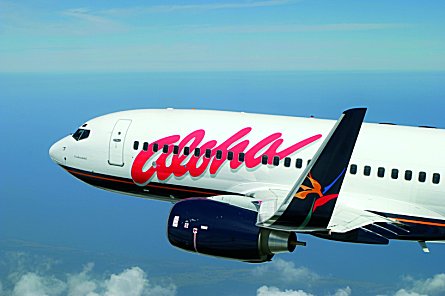Aloha’s exit comes just a year after rising debts, stiff competition and soaring fuel costs overtook it. The Hawaii-based carrier followed larger rival Hawaiian Airlines into reorganisation and, like Hawaiian, relied on new management to persuade staff to cut costs enough that it could attract new capital. In its work-out year, Aloha cut about $75 million in costs.

The final agreement on a labour deal came only after marathon bargaining lasting until 03:00 – just hours before a bankruptcy court was due to decide Aloha’s future. In announcing the agreement to federal bankruptcy judge Robert Faris, Aloha president David Banmiller said: “If you perceive a softness in my tone and perhaps a slip of the tongue here and there, it relates in part to a lack of sleep...I must say, though, that sleep is overrated.”
A unique feature of the Air Line Pilots Association agreement with Aloha keeps its retirement-fund plan from immediate termination in a time-buying compromise that would freeze the plan – rather than kill it – if Congress passes pending legislation allowing airlines to spread their retirement liabilities over 20 years. If Congress does not act by the end of the year, the pension plan would probably be terminated and replaced with a less generous scheme. However, Hawaii’s congressional delegation strongly backs pension reform.
Union leaders urged the 270 Aloha pilots to ratify the pact and they did so in late November. Banmiller said the pension resolution, which avoids a confrontation that has stymied carriers such as Delta, “could well set a pattern for other airlines pursuing reorganisation”.
The labour accord clears the way for $100 million in funding in Aloha by Californian supermarket magnate Ron Burkle and an investment group led by a former football star. The two Hawaii families that hold large stakes in Aloha – descendants of its earliest backers – would retain interests in the carrier.
But the 60-year-old airline has no assurance of an easy ride after reorganisation. The network carriers continue to build up services direct to secondary cities throughout the islands, a pattern that has eroded Aloha’s lucrative feed through the Honolulu gateway.
Also, aggressive Mesa Air Group is ready to launch a new inter-island competitor this winter. Independent Honolulu-based securities analyst Randy Havre cites Mesa’s established relationships with both Delta and United, saying: “Mesa is looking to be a formidable competitor if it really does enter the inter-island market.” ■
Source: Airline Business
















